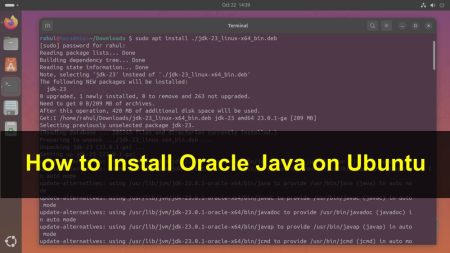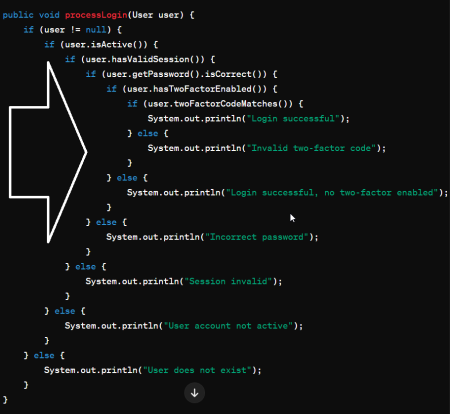Java code formatting is an essential aspect of writing clean, readable, and maintainable code. Adopting a consistent set of formatting rules across your team or organization will significantly improve the overall quality of your codebase, making it easier for developers to understand, modify, and debug code. This article will provide an overview of Java code formatting best practices, discussing the key principles and techniques developers can use to enhance the readability and maintainability of their code.
1. Consistent Indentation
One of the most crucial aspects of code formatting is consistent indentation. Indentation helps visually separate different code blocks, making the code easier to read and follow. In Java, it is common to use four spaces per indentation level. Some developers prefer using tabs; however, spaces are generally recommended to ensure consistency across different editors and platforms.
2. Braces and Whitespaces
Braces are essential for denoting code blocks in Java. The two most common brace styles are the “One True Brace Style” (1TBS) and “Allman Style”.
- 1TBS places the opening brace at the end of the line and the closing brace on a new line, indented to match the starting line:12345if (condition) {// code} else {// code}
- Allman Style places both the opening and closing braces on their own lines, with the same indentation level as the starting line:12345678if (condition){// code}else{// code}
Regardless of which style you choose, it is essential to apply it consistently throughout your codebase. Additionally, always surround operators with whitespaces to improve readability:
1 | int sum = a + b; |
3. Line Length and Wrapping
A good rule of thumb for line length is to limit it to 80-100 characters. This ensures that the code is easily readable on various screen sizes and resolutions. If a line exceeds the character limit, consider wrapping the line using the following guidelines:
Here are some examples demonstrating how to wrap lines that exceed the recommended character limit:
- Breaking after a comma in a method call with multiple arguments:12String formattedString = String.format("Name: %s, Age: %d, Address: %s, Phone: %s",name, age, address, phoneNumber);
- Breaking before an operator in a long arithmetic expression:1234int result = value1 * factor1+ value2 * factor2- value3 * factor3/ value4 * factor4;
- Wrapping a long conditional expression:1234if (condition1 && someMethodWithLongName(argument1, argument2, argument3)|| condition2 && anotherMethodWithLongName(argument4, argument5)) {// code}
- Wrapping a long string concatenation:12345String message = "Dear " + recipientName + ",\n"+ "Thank you for your purchase of " + productName + ".\n"+ "Your order number is " + orderNumber + ".\n"+ "Sincerely,\n"+ "The Customer Service Team";
- Aligning wrapped lines with the opening delimiter in a lambda expression:1234list.stream().filter(item -> item.getCategory().equals("Electronics")&& item.getPrice() > 100).forEach(item -> System.out.println(item.getName()));
Remember to adhere to the recommended character limit and wrap lines consistently to enhance the readability of your code.
4. Commenting and Documentation
Comments and documentation are crucial for explaining the purpose, functionality, and usage of your code. Follow these guidelines for effective commenting:
- Use Javadoc comments (
/** ... */) for class, interface, method, and field descriptions. - Use single-line comments (
//) for short explanations, clarifications, or TODO notes. - Use block comments (
/* ... */) for longer explanations, especially when describing complex algorithms.
Javadoc comments example::
1 2 3 4 5 6 7 8 9 10 11 12 13 14 15 16 17 18 19 20 21 22 23 24 25 26 27 28 29 30 31 32 33 34 35 36 37 38 | /** * Represents a person with a name and an age. */ public class Person { private String name; private int age; /** * Constructs a new Person with the specified name and age. * * @param name the person's name * @param age the person's age */ public Person(String name, int age) { this.name = name; this.age = age; } /** * Returns the person's name. * * @return the person's name */ public String getName() { return name; } /** * Sets the person's name. * * @param name the new name to set */ public void setName(String name) { this.name = name; } // ... } |
Single-line comments example:
1 2 3 4 5 6 7 8 | public int calculateSum(int a, int b) { // Add the two numbers and return the result return a + b; } public void doSomething() { // TODO: Implement this method later } |
Block comments example:
1 2 3 4 5 6 7 8 9 10 11 12 13 14 15 16 | /* * This method implements the Euclidean algorithm for finding the greatest * common divisor of two integers. The algorithm works by recursively applying * the following formula: * * gcd(a, b) = gcd(b, a % b) * * Until b equals zero, at which point the result is a. */ public int gcd(int a, int b) { if (b == 0) { return a; } else { return gcd(b, a % b); } } |
5. Naming Conventions
Adopting standard Java naming conventions will make your code more intuitive for other developers. Some commonly accepted Java naming conventions include:
- Classes and interfaces: UpperCamelCase (e.g., ClassName)
- Methods and variables: lowerCamelCase (e.g., methodName)
- Constants: UPPER_SNAKE_CASE (e.g., CONSTANT_NAME)
Classes and interfaces:
1 2 3 4 5 6 7 | public class ShoppingCart { // ... } public interface PaymentProcessor { // ... } |
Methods and variables:
1 2 3 4 5 6 7 8 9 10 11 | public class Calculator { private int currentValue; public void add(int value) { currentValue += value; } public void reset() { currentValue = 0; } } |
Constants:
1 2 3 4 | public class Constants { public static final String API_URL = "https://api.example.com/"; public static final int MAX_RETRIES = 3; } |
Conclusion
By adhering to these Java code formatting best practices, developers can create code that is clean, readable, and maintainable. Consistent indentation, brace styles, line length, commenting, and naming conventions all contribute to the overall quality of your codebase. By promoting a shared understanding of these practices across your team or organization, you can improve the efficiency of your development process and ensure that your code remains accessible and comprehensible to all.


